Where to Put Vending Machines: 27 Best Locations
March 2, 2023
March 2, 2023

If you’re looking to get into the vending machine business, you’ve come to the right spot. We analyzed existing resources and talked to the owner of Hill Vending to find out the best vending machine locations. Get ready to find out where to put vending machines!
Adam Hill bought his first vending machine route for $120K in 2014 and grew his vending machine business to $600K annually. He’s even started his own machine vending training course. In our interview, he explained there are four keys to vending machine business success:
Adam said:
Click any of the above text to jump to that section of the article. Adam Hill told us: He went on to explain there are two main ways to choose a vending machine location: Check out our interview about the vending machine industry below: In addition to the two ways that Adam mentioned, we’ll also discuss buying a vending machine franchise. Keep reading to learn how to buy an existing vending machine route. Adam suggests buying an existing vending machine business from a business owner because: As you review a potential route for purchase, you’ll want to ask lots of questions about the following: Adam discusses all that and more in our Vending Machine Class. Sign up for early access. Adam explained: Next, we’ll discuss cold-calling businesses. Adam also discussed going to businesses and negotiating to place vending machines on their properties. He explained that this can be difficult because existing locations frequently have a service contract. He also gave tips on the best person to talk to: He also explained why you shouldn’t approach the general manager or property owner unless you are dealing with a solo entrepreneur. Check out our in-depth walkthrough on the vending machine industry. Next, we’ll discuss vending machine franchises. Vending machine owners can also use the franchise model to start a vending machine business. This vending machine business model is often used by major vending machines companies like Coca-Cola and Pepsi. In addition, other vending companies like Pharmabox use this model. There are two basic models that these franchising opportunities use: Check out our other blogs about vending machines including: Then sign up for our Vending Machine Bootcamp. You’ll want to consider the elements of choosing a location for your vending machines. The best locations for vending machines have the following characteristics: Let’s look at each of these a little more. You can legally put a vending machine anywhere you have an agreement with a property owner. There may be licensing requirements depending on your location, but as long as you follow the laws and have an agreement in place, you can put your vending machines in almost any location. The vending industry covers all types of products. Your ideal location will depend on what you sell in your vending machines. The right location for a snack machine is almost anywhere (except maybe the lines in amusement parks), but maybe you shouldn’t offer energy drinks in the waiting room in medical centers. Adam told us: Check out our blog about different types of vending machines to find the types that most interest you. The number of people passing a vending machine impacts whether you have profitable locations. Some locations have less than 50 people passing the vending machine daily, while airports can achieve up to 76 million travelers per day. A business that is busy 24/7 like a hospital is likely to be a better place for a vending machine than somewhere like an apartment complex pool that closes for half the day. You’ll want to make sure that your route is easy to get to regularly. The further you have to drive, the more business expenses you’ll have. It is harder to sell products if people can’t easily access the vending machines. Providing easy access means: Sometimes there will be a suitable location in areas that are off the beaten path. For instance, shopping malls and casinos often have hallways with a bathroom and drink machines. These machines regularly do well because people buy snacks or sports drinks while waiting for their friends. You probably want to avoid businesses where the property owner frequently changes. You don’t want to enter into a vending machine placement contract, then have to renegotiate with a new owner soon afterward. Next, we’ll discuss some of the best locations for vending machines. We’ve compiled some data on the best places to put a vending machine. We’ll cover: Consider some of the following vending machine location ideas. The top 10 airports have more than 100,000 people passing each day. Your vending machine business is sure to make some great revenue. You’ll need lots of machines and potentially a full staff to keep up with the foot traffic in the best locations. If you can’t secure one of the best locations, there are plenty of other options. A business owner that even secures a slower airport has over 600 people pass their vending locations every day. Placing vending machines at train and bus stations can be highly profitable. Amtrak, the largest U.S train station operator, carries more than 22.9 million riders in 160 communities. That comes out to 400 riders daily per community, but the highest travel rates see more than 34,000 people per day. Meanwhile, Greyhound Lines serves nearly 16 million passengers across 135 markets, or over 325 people per bus station daily. If you can negotiate a deal with the station property owners, they are a good place to put a vending machine. Hospitals and long-term care facilities are also high-volume places for vending operators. According to the Center for Disease Control, the average person goes to the doctor 2.5 times per year, and such facilities house nearly 240,000 people. There are three common areas to include vending machines: A waiting room is a great place to put a vending machine with healthy snacks like protein bars and granola bars. You’ll probably do well with drink machines as well. Provide vending needs for people waiting for their families and make a nice profit doing it. Employees need a place to get an easy snack or drink and a vending machine in the break room can be highly profitable. You’ll get a steady flow of revenue from these 24/7 businesses. Placing a vending machine near the nurses’ desks is a great way to make a huge profit because you can serve patients, visitors, and staff all from one machine. Another good place to put vending machines is in warehouses. Warehouses are commonly used as distribution centers, manufacturing facilities, and industrial parks. These businesses generally employ hundreds or thousands of people and operate 24/7. State laws typically guarantee two 15-minute breaks and a 30-minute break per shift. That means vending machines in the break room do well because employees don’t have time to leave the premises. A vending business can be highly profitable if you place machines in office buildings with 50 or more employees. Employees get hungry and thirsty throughout the day and vending machines provide options for people who forgot to bring something from home. That makes an office space a great location for vending machines. Apartment complexes are great locations for vending machines. Each complex is different, but many have multiple locations for people to pass a machine regularly including: Adam warned us: Keep reading to find out why a car dealership is on the best vending machine location list. Car dealerships make great locations for beverage services because they have lots of employees, plus the average consumer spends nearly three to four hours buying a car and several hours waiting every time they take the car for service. Guests in a hotel or motel will want a quick snack or drink even if they don’t want a full meal. Once you negotiate deals with these properties, you might wonder where to put your vending machine. You can place your vending machine: Given that hotels are 24/7, they can be top-grossing locations. Gyms and fitness centers are full of people working out. Where can you put a vending machine in a gym? Try the following locations to give your machines a competitive edge: Make sure to offer healthy snacks, water, and sports drinks. They don’t expect a full meal because that would weigh them down. Schools, community colleges, and universities are always busy. That makes them a great place for vending machines. Just to give you an idea there are: States often have regulations about the type of quick snack options you can provide on school property. You’ll also need to be ADA compliant. The answer for many colleges is probably no. Many private institutions are seeing large declines in enrollment. Some state-funded schools are doing well, but on average they are facing year-over-year declines (see enrolled students link above). If you can negotiate deals in these locations, you may find greater success because they have growing populations of college enrollment: Make sure to research the enrollment trends and percent of students who are online only. Every school releases information about this. Keep reading for another exception to the decline in foot traffic at colleges. If a college has a dorm, you might want to figure out how to get vending machine locations into it and the rest of the campus. Dorms tend to have lots of people at them 24/7. Don’t forget to integrate your card machine with their meal plans to get even better revenue. A retail store has two primary areas vending machines make sense: The front of the store should be things that people run in to get quickly like personal hygiene products, while the break rooms would be perfect for snack machines and drink machines. A gas station needs a variety of vending machines, but most machines will not be coin operated. They may be from one vendor or multiple vendors. They will typically include: It’s difficult to be all things to all people so if you choose to go with gas stations, start with one type of vending option and go from there. A shopping center is another great place for vending machines. You can place a vending machine: If there’s an amusement park in your area, you can find places to put vending machines like: They’ll be outside, so they’ll have more wear and tear. A sports complex will also have similar needs. These buildings make great locations for vending machines because they host meetings and conventions where people spend most of their days. You can place vending machines that offer: A car wash is a great place for a vending machine because people often want a drink. There are two types of car washes: If a restaurant has popular items that will stay good for a decent amount of time, it might boost business to offer them in vending machines. This is especially so in a location that makes it easy to pick up food on the way home from work. Check out this Pecan Pie Vending Machine outside Berdoll’s Farm: Offer to place a vending machine outside of a health food store and help them sell their products even when they’re closed. Communities that often sponsor athletic events that involve cycling and running might especially benefit from after hours service. Salons are bustling with activity and people will often get hungry or thirsty during a cut or dye job. Provide vending machines for employees or customers to get their snacks or drink on the go. You might even be able to offer alcohol in them. Offering drinks and snacks in a park is another great way to find vending machine locations. If you start a Hey Buddy Franchise, you can offer treats for humans and doggies in the same vending machine. Everyone will be happy when they get a treat with man’s best friend. Laundromats and vending machines go together like peanut butter and jelly. You can offer snack and drink machines, but don’t forget to offer products for laundry care, too. Check out Vend-Rite for vending machines specifically made for laundromats. If you’ve ever wondered how to start a laundromat business, we’ve got a blog about that, too. An RV Park is a great place for a vending machine because people often need drinks, ice, snacks, or personal hygiene items while traveling. If there is an RV Park near you, see if you can provide services. A waiting room is a great place to put a vending machine with healthy snacks like protein bars and granola bars. You’ll probably do well with drink machines as well. Provide vending needs for people waiting for a service to be completed and make a nice profit doing it. Employees need a place to get an easy snack or drink and a vending machine in the break room can be highly profitable. You’ll get a steady flow of revenue from these, especially in 24/7 businesses. Placing a vending machine near the nurses’ desks is a great way to make a huge profit because you can serve customers, visitors, and staff all from one machine. Firefighters commonly live at their stations during their shifts. They need drinks and snacks, so make it easy for them with a vending machine. Now that you know where to put vending machines, let’s look at how to find a vending machine location. There are a ton of ways to find vending machine locations. You might want to try some of the following ideas. You can look up businesses online to establish places you want to offer to put vending machines. I’m going to use Clark County, Nevada as an example. You’ll want to follow these steps: The following steps are sparsely cited because this is a strategy I use when conducting research for my consulting business. Let’s look at each step. Do a quick Google Search to find your local business licensing lookup. In this example, the search would look like “Clark County business license lookup.” The results should look similar to the picture below: You want to make sure that it is the real site, which means look for a .gov in most scenarios. Click the link that says “Business License Search.” That will bring you to a page that will be similar to the one below: We’ll discuss what to do here in the next step. On this step, you’ll have different ways to search for a business license including: Click on the “Search Business Category” option and it will take you to a page that looks like the one below: Each state will have slightly different options, but should be similar. I’ve done this in Dallas, Las Vegas, and Seattle, where all were similar. You can fill in as many of the following fields as you want. Once you’ve put in the information, click enter and you’ll get results like the ones below. You’ll want a list of businesses to research that includes about 50-250 businesses, depending on how many machines you are trying to place. I only found six hotels so I would need some more from other categories in this example. Next, we’ll want to review each business. If you click on one of the licenses, it will take you to the summary page, which looks like the picture below. You specifically want the address, phone number, and owners’ name from the screen. Do your research on them to find out: Once you find enough information, it’s time to reach out to them. Depending on the business, you can either do an email lookup, call them, or just go up there. An email or call is less expensive and might help establish if they are open to discussing your proposal. If they agree to meet with you, go visit them. If not, move on to the next business. When you visit the location, bring a: Remember to be friendly and observe the location so you can describe where you’d put the machines and how often you’d provide service. Once the property owner agrees that it makes sense to have a vending machine on their property, negotiate the terms and provide them a vending machine proposal contract. While many vending machine companies don’t like offering a percentage to the property owner, it is common to pay 5% to 20% of sales for lease of the space. Once they sign, start preparing to service their location. Now that you have established where to place your vending machines, it’s time to place them and provide stellar service to your customers. We’ve partnered with Adam to bring you the best information on starting a vending machine business. Sign up for our free class below: What are your favorite vending machine locations?
3 Ways of Investing in Vending Machines
Buy Vending Machine Route
Perform B2B Sales
Buy a Vending Machine Franchise
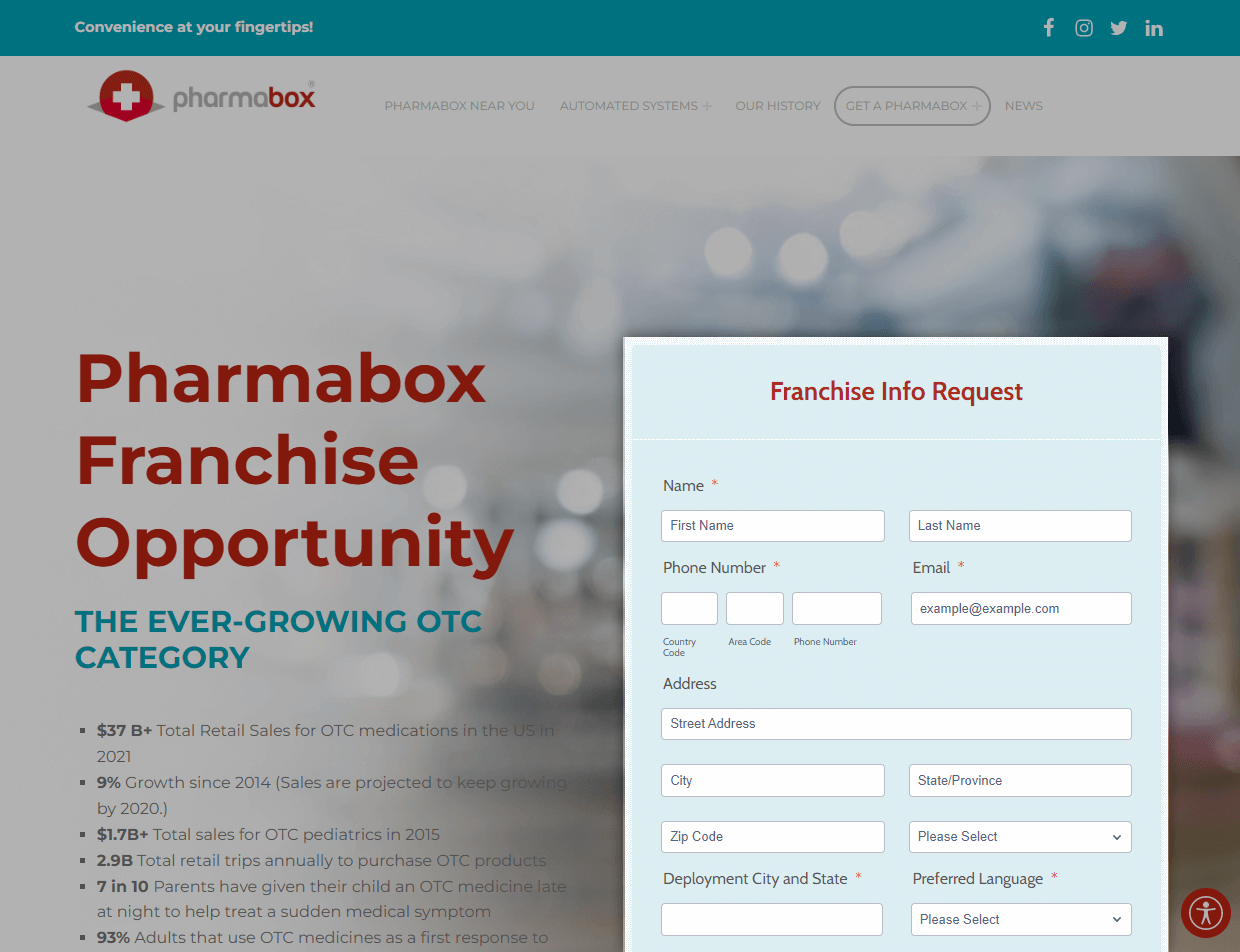
Where Can I Learn How to Start a Vending Machine Business?
Where Can I Put a Vending Machine Near Me?

Where Can I Legally Put a Vending Machine?
Type of Vending Machine Business
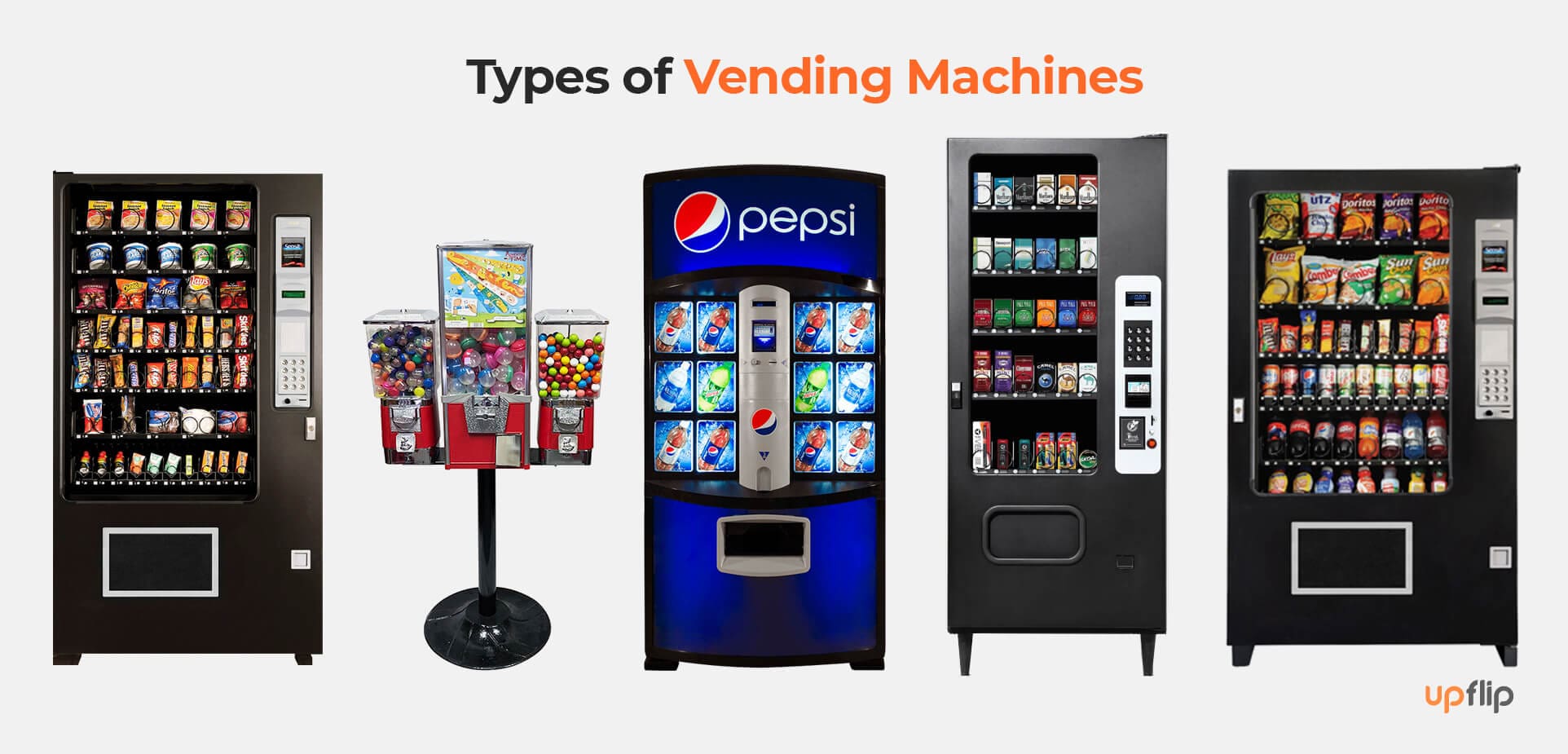
Foot Traffic
Hours of Operation
Distance from You
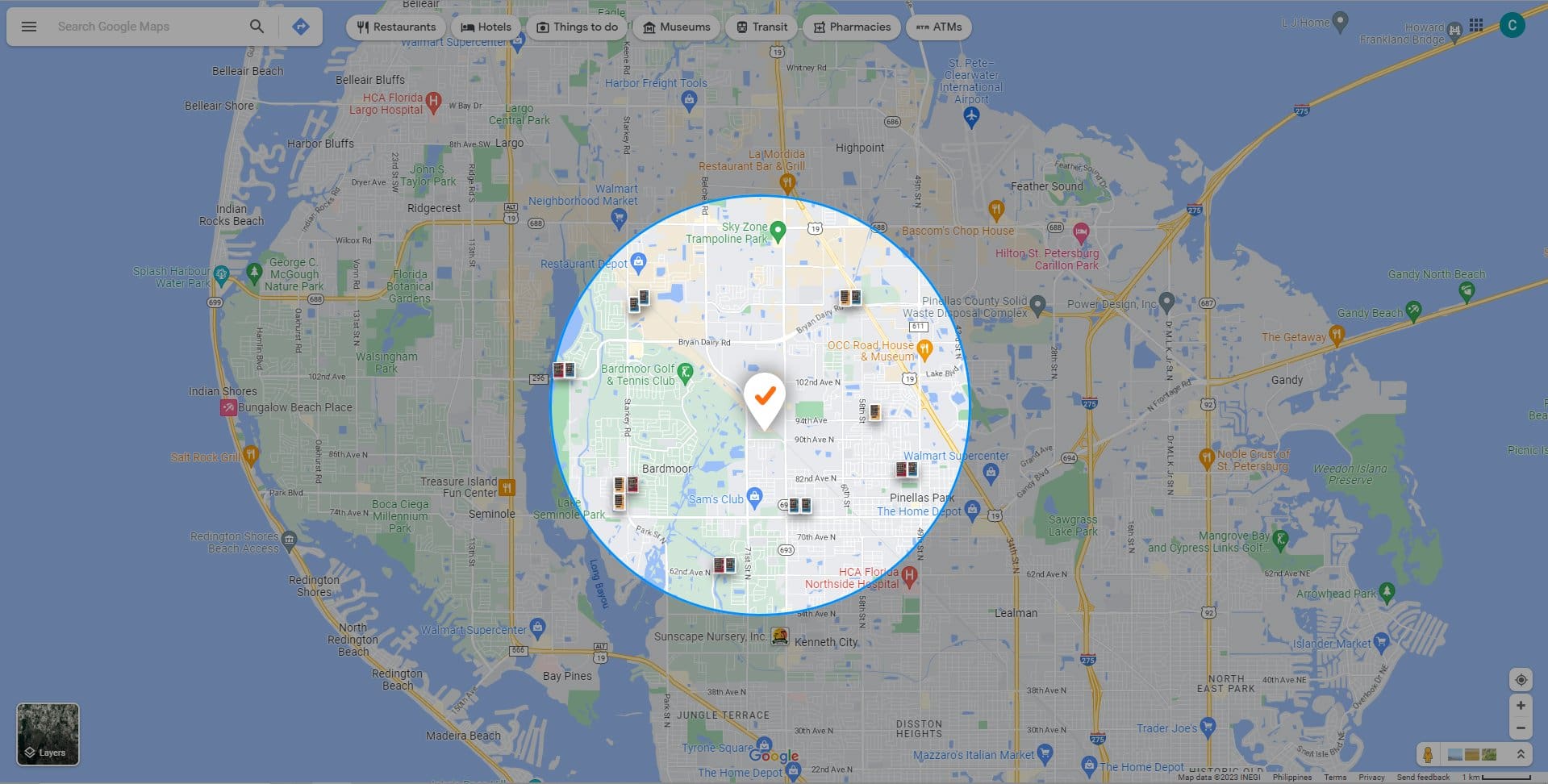
Accessibility to the Vending Machine
Infrequent Ownership Changes
Best Places to Put Vending Machines
#1. Airports Are the Best Locations for Vending Machines

#2. Where Can I Put My Vending Machine? Bus and Train Stations
#3. Hospitals and Care Facilities Are Good Locations

Waiting Rooms
Break Rooms
Reception Desk
#4. Warehouses Are Good Places to Put Vending Machines

#5. Where Can I Put a Vending Machine? Offices
#6. Where to Put a Vending Machine: Apartment Complexes
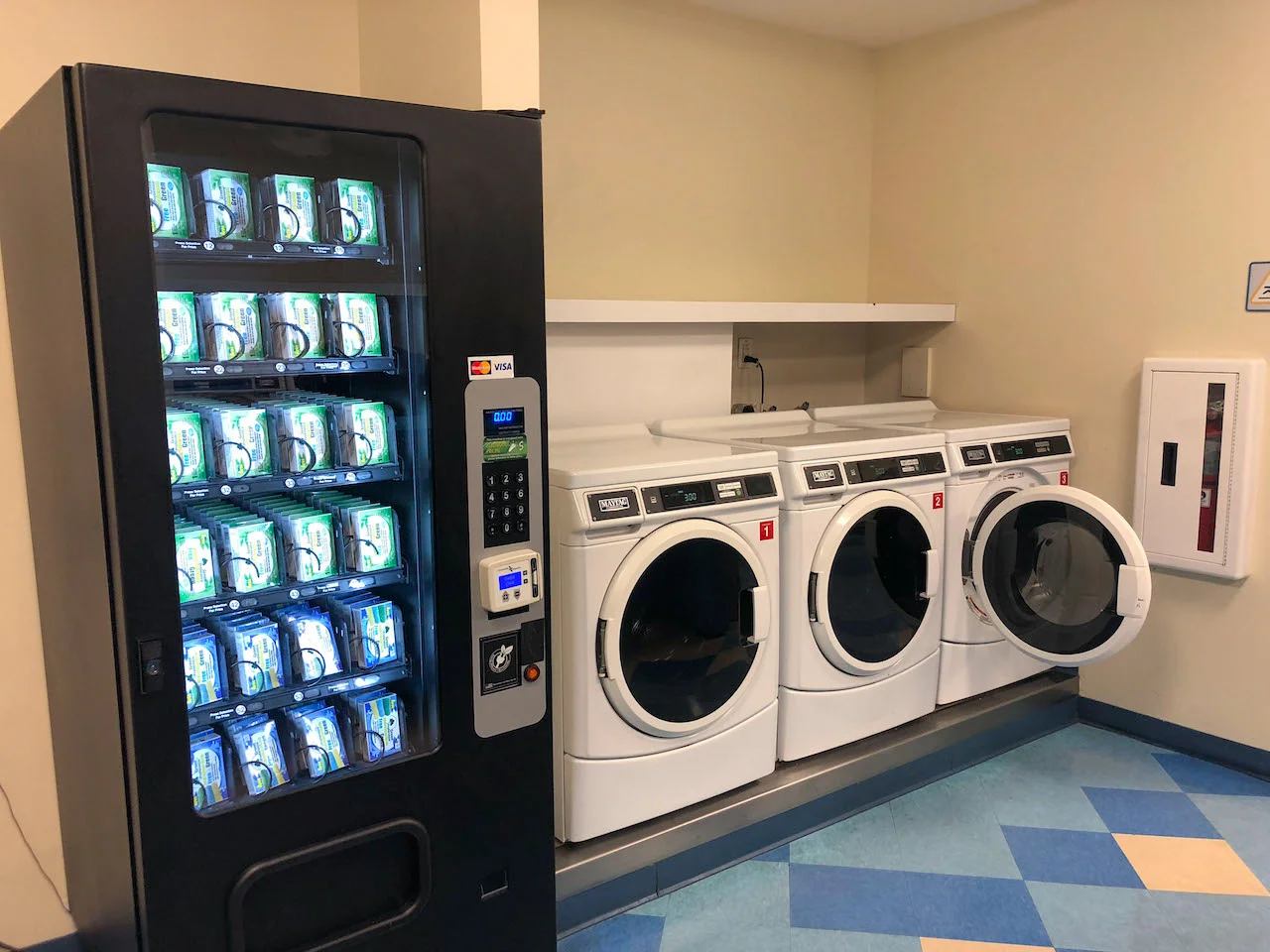
#7. Where Can I Put My Vending Machines? Car Dealerships
#8. Best Location for Vending Machine: Hotels
#9. Gyms Might Be Ideal Locations
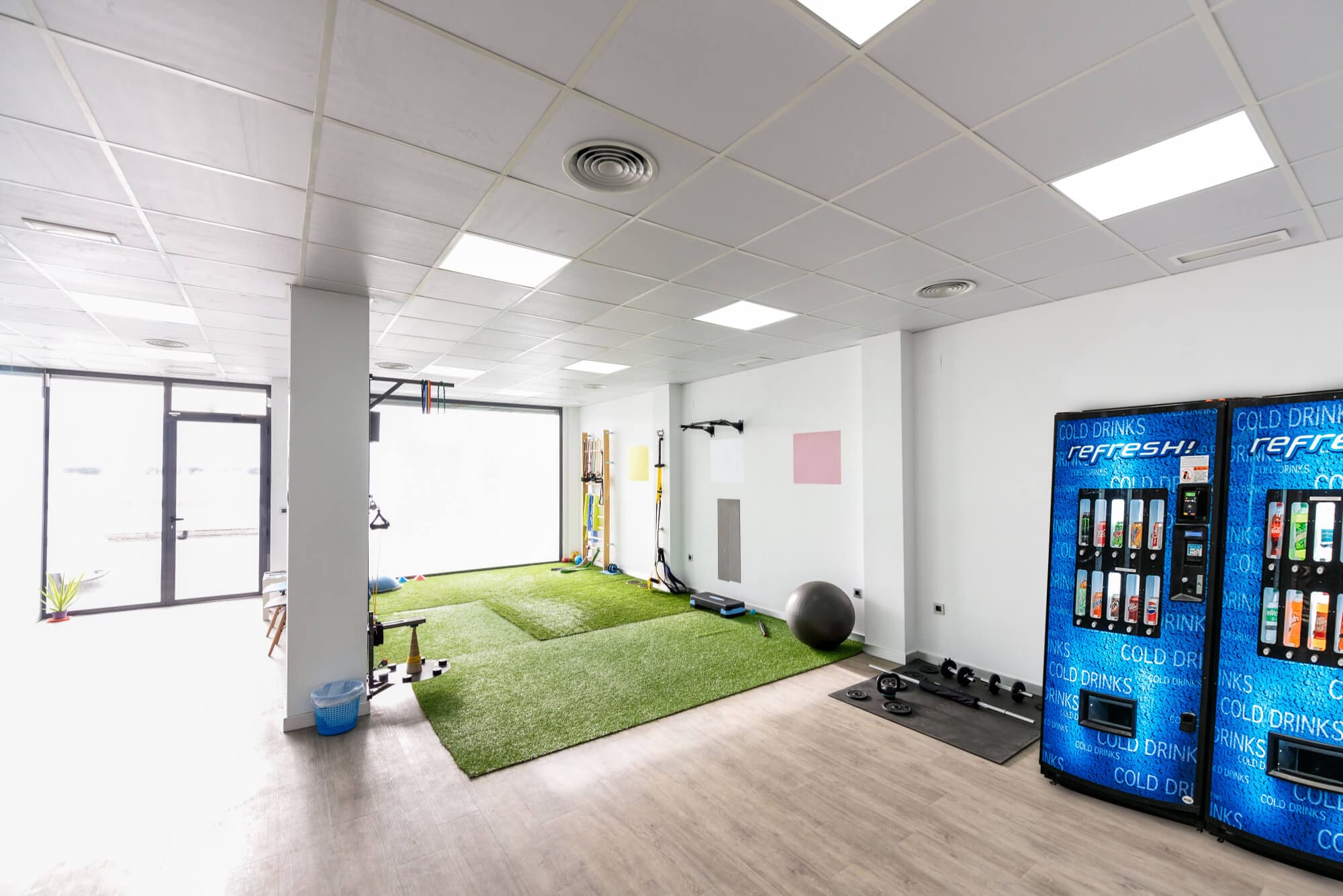
#10. Want High Foot Traffic? Try Schools, Community Colleges, and Universities

Are vending machines a good investment on college campuses?
#11. Dorms: Best Vending Machine Locations
#12. Retail Locations are Great Vending Machine Locations
#13. Gas Stations Use Vending Machines Too!

#14. Shopping Centers are Good Vending Machine Locations
#15. Amusement Parks are Great Locations for Machine Vending
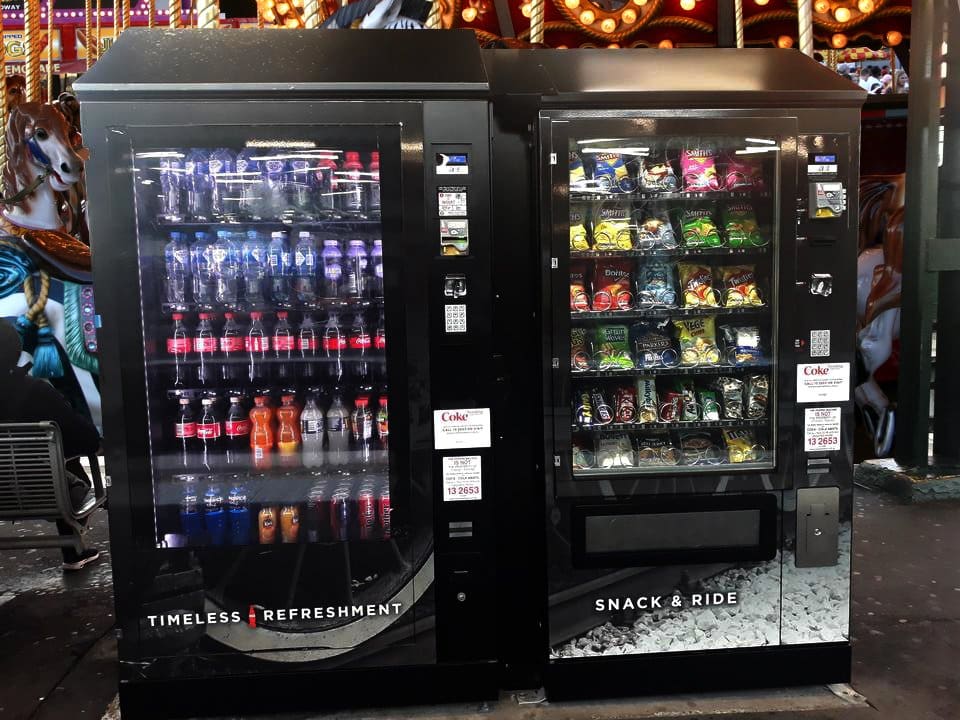
#16. Conference Centers Need Vending Machines
#17. Car Washes

#18. Restaurants Use Vending Machines to Save Time
#19. Health Food Stores
#20. Hair Salons
#21. Parks are Great Places for Vending Machines
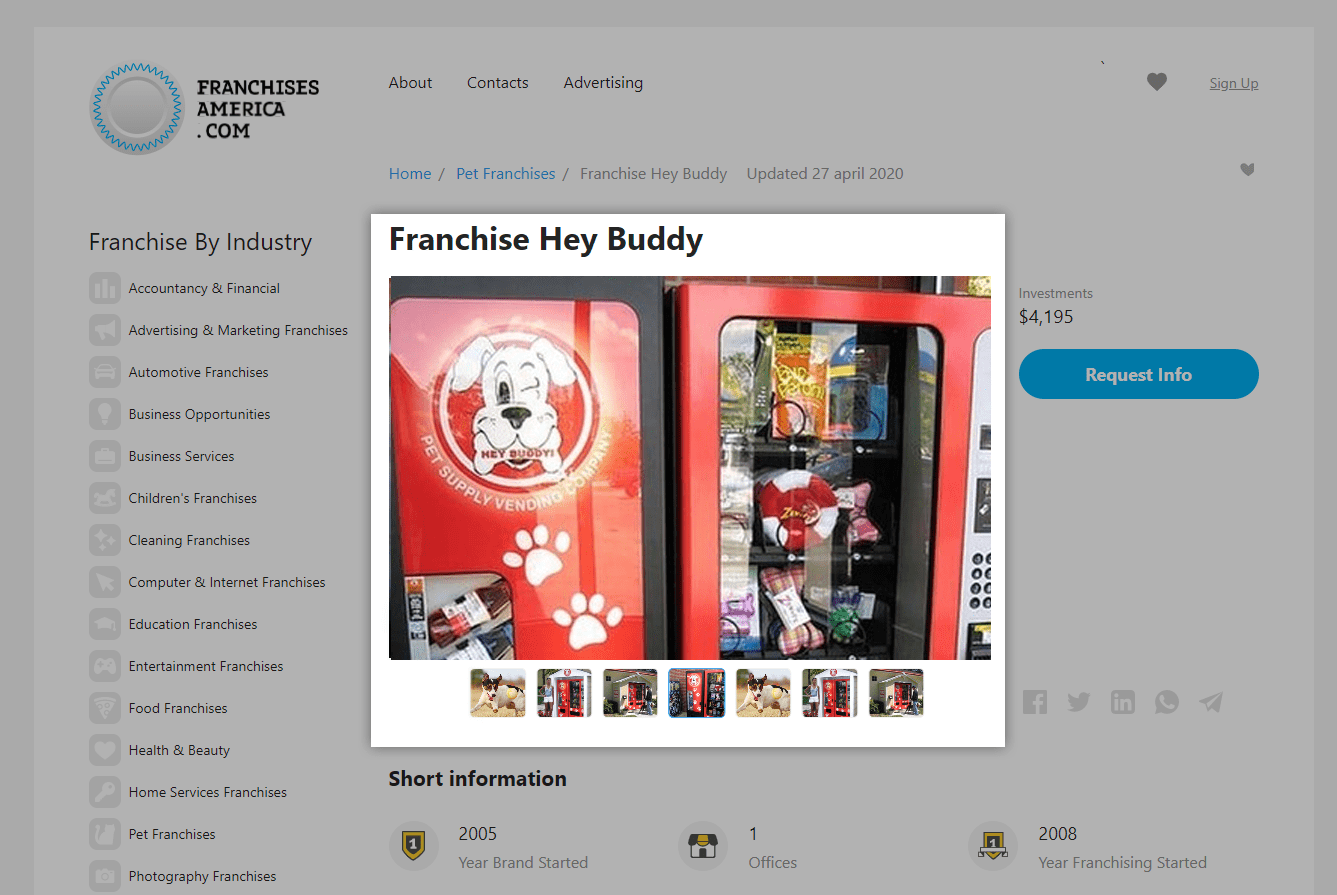
#22. Laundromats Need Specialty Vending Machines
#23. RV Parks Need Vending Machines
$24. Waiting Rooms: Visitors Love Vending Machines
#25. Break Rooms: Employees Need Snacks

#26. Reception Desks Like Vending Machines
#27 Fire Stations Need Food And Drinks
How to Find Vending Machine Locations

How to Find Locations For Vending Machine Using Business Lookups
Find Business Lookup Site for Your City
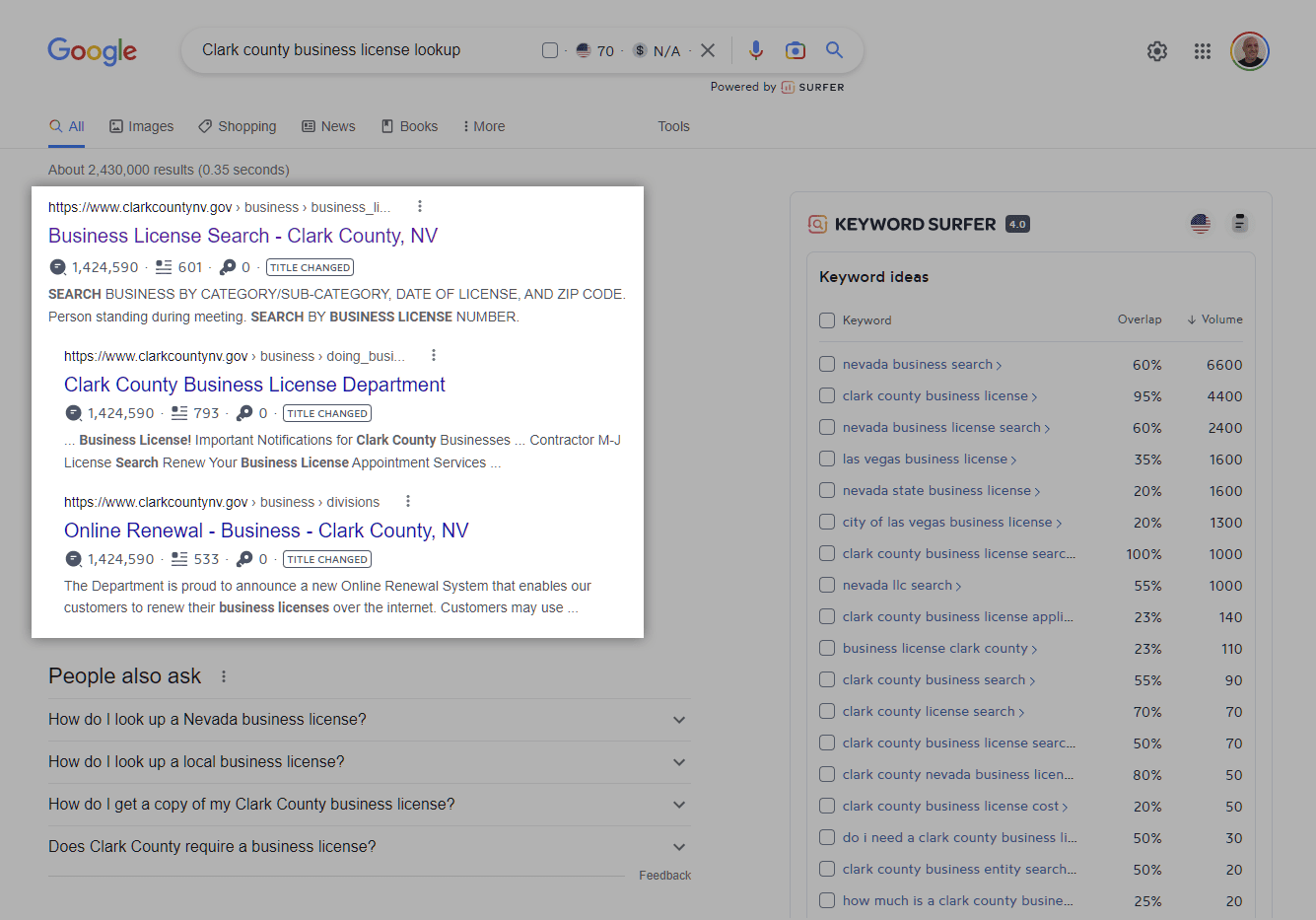
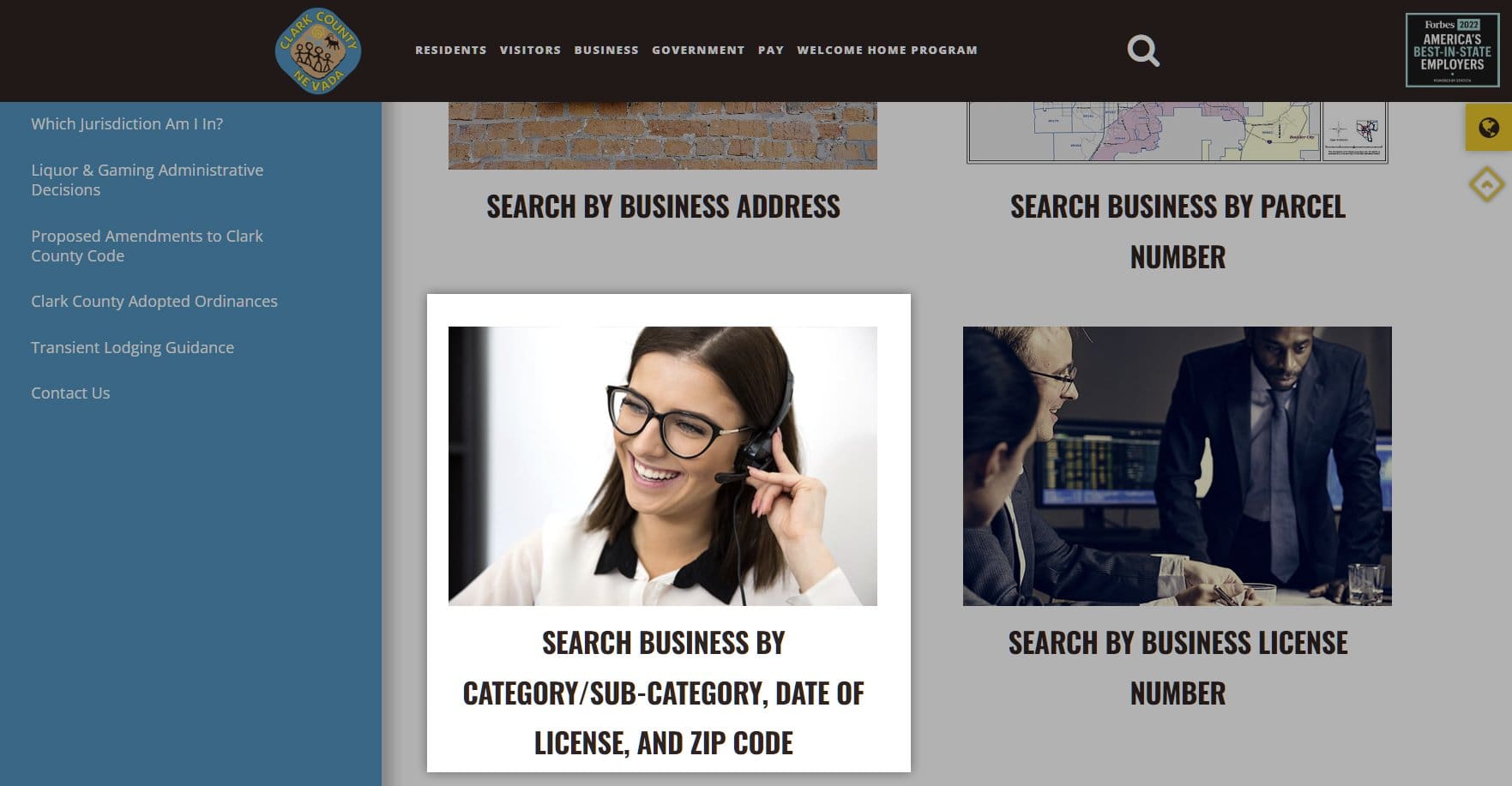
Review Search Options
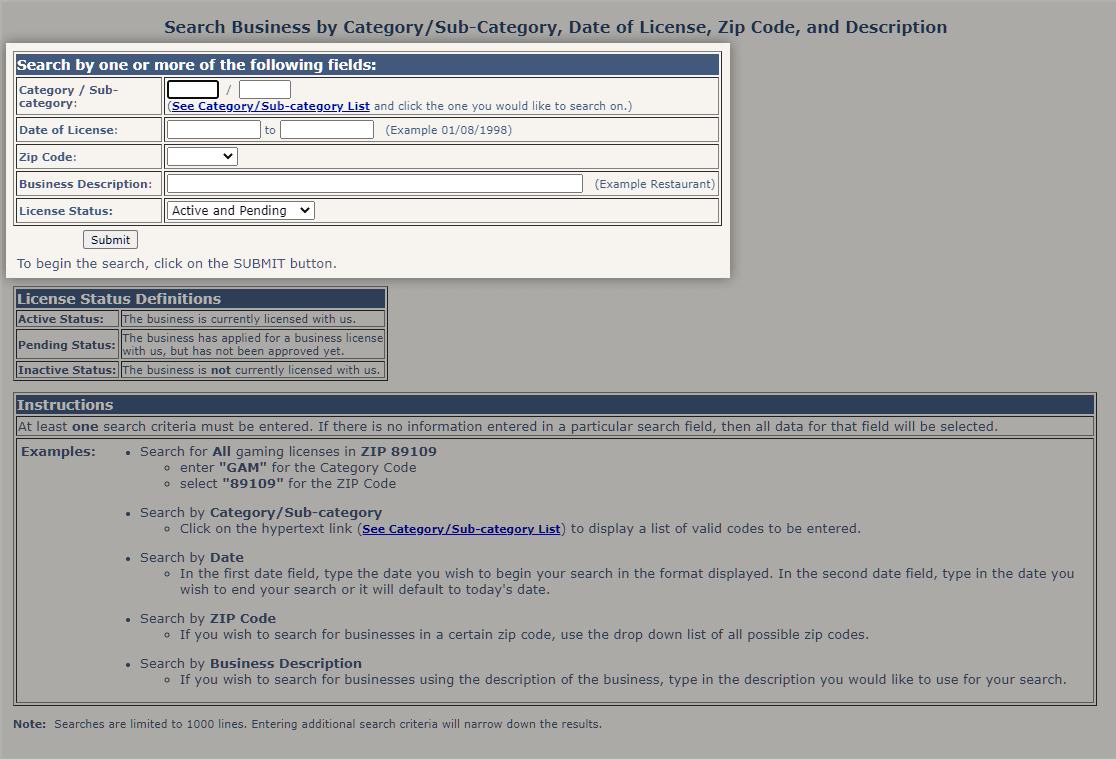
Input Category, Date of License, or Zip Code
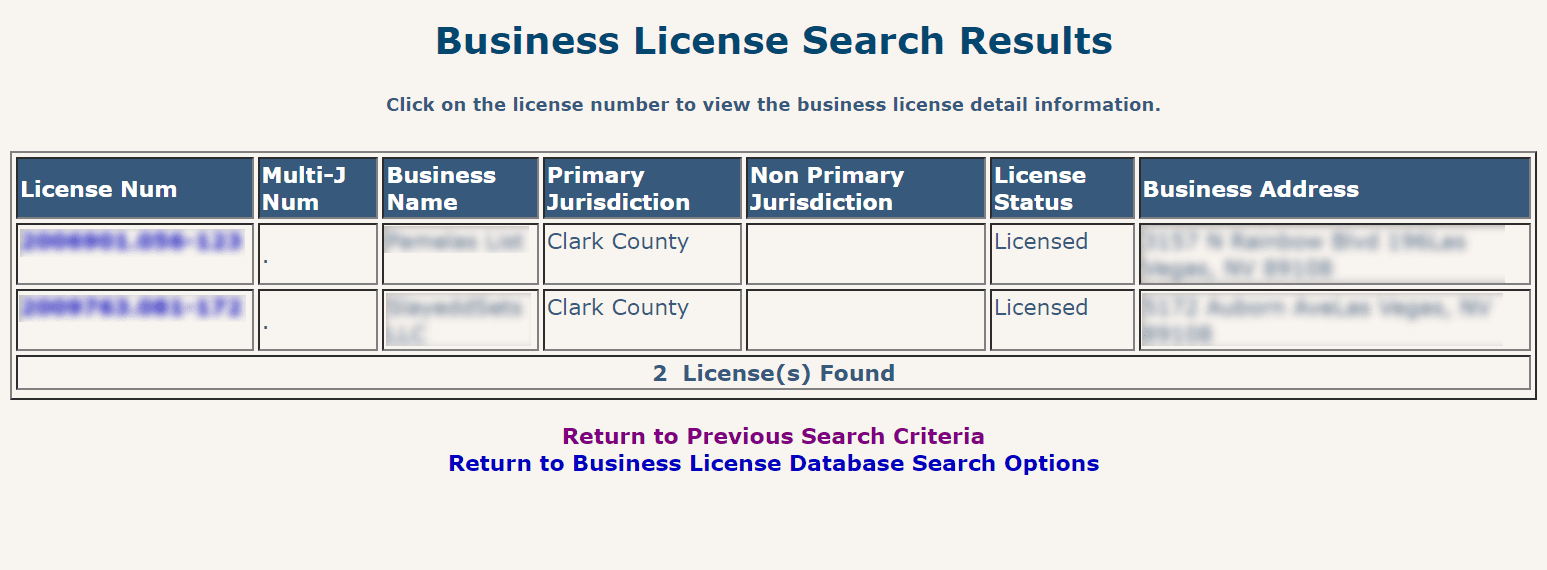
Review Businesses
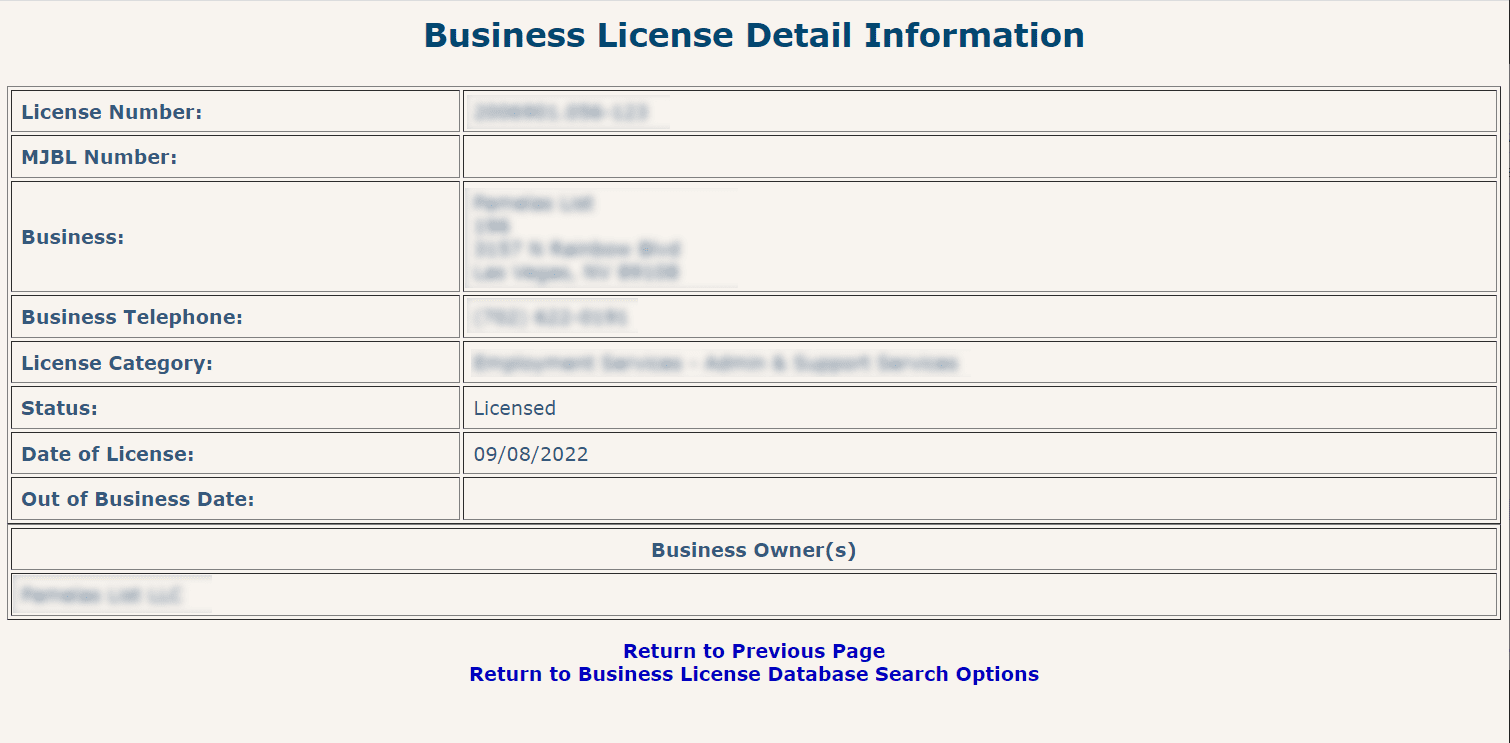
Reach Out to Business Owners
Visit the Location
Provide a Vending Machine Contract Proposal
Ready to Take The Next Step?
Brandon Boushy
[su_youtube url="https://www.youtube.com/watch?v=P-Hl17zsmuo"]
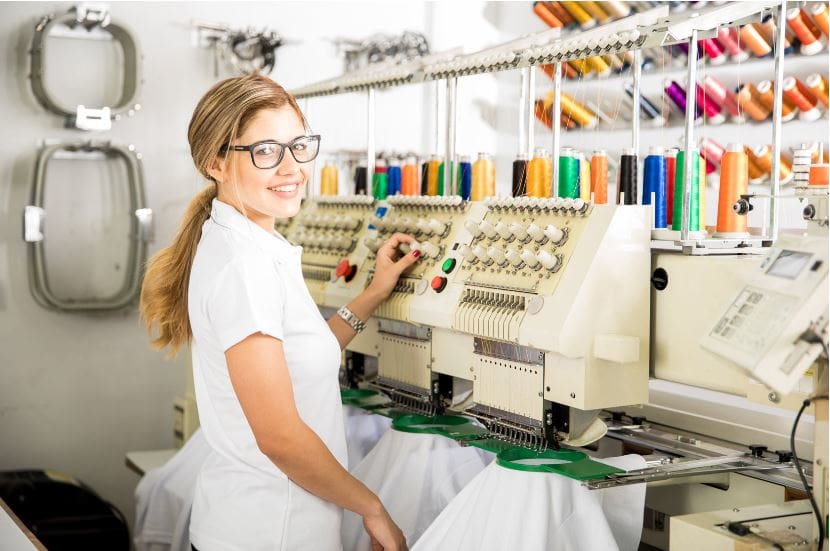 If you currently know nothing about commercial embroidery, you’re going to need to acquire some knowledge about the embroidery industry.
Try to find an experienced embroiderer so he can take you under his wing and teach you what you need to know. You should also read everything you can in books about custom embroidery.
YouTube has some fantastic tutorials on commercial embroidery.
Join embroidery and custom apparel organizations to get the latest news, trends, and tips for starting your embroidery company.
One of the very best organizations to join is the Embroidery Trade Organization (ETA). This association will allow you to take advantage of the market with new training, marketing secrets, and networking opportunities.
You can also attend trade shows to schmooze with suppliers and owners of other embroidery businesses so you can pick their brains.
If you currently know nothing about commercial embroidery, you’re going to need to acquire some knowledge about the embroidery industry.
Try to find an experienced embroiderer so he can take you under his wing and teach you what you need to know. You should also read everything you can in books about custom embroidery.
YouTube has some fantastic tutorials on commercial embroidery.
Join embroidery and custom apparel organizations to get the latest news, trends, and tips for starting your embroidery company.
One of the very best organizations to join is the Embroidery Trade Organization (ETA). This association will allow you to take advantage of the market with new training, marketing secrets, and networking opportunities.
You can also attend trade shows to schmooze with suppliers and owners of other embroidery businesses so you can pick their brains.
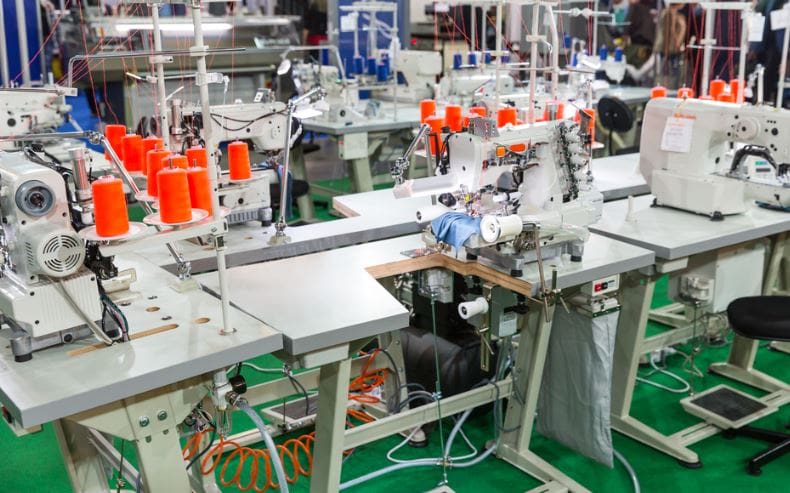 Here are some other things you’ll need to start your own embroidery company:
Here are some other things you’ll need to start your own embroidery company:
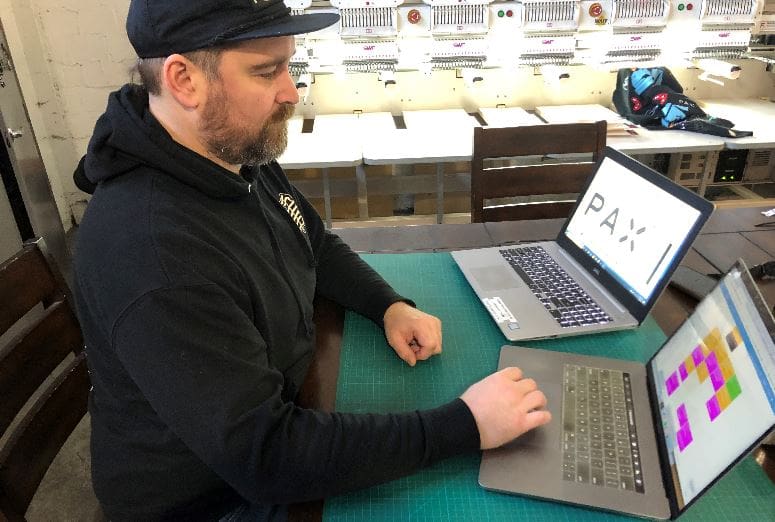 Today, he has come to the realization that he should stick to what he's good at. That's the embroidery, screen printing, and graphic designing which has been his bread and butter.
One of the things he contracts out is accounting:
[su_quote]Get a good bookkeeper. That's really a tough one to kind of figure out. It's kind of a hard pill to swallow the expenses, but it's definitely worth it. It took us ten years to figure that out.[/su_quote]
As far as bookkeeping services go, I recommend Bench or Bookkeeper.com.
Today, he has come to the realization that he should stick to what he's good at. That's the embroidery, screen printing, and graphic designing which has been his bread and butter.
One of the things he contracts out is accounting:
[su_quote]Get a good bookkeeper. That's really a tough one to kind of figure out. It's kind of a hard pill to swallow the expenses, but it's definitely worth it. It took us ten years to figure that out.[/su_quote]
As far as bookkeeping services go, I recommend Bench or Bookkeeper.com.
 Before you can set up your embroidery shop, you’ll need to make a quick call to the various government offices to find out which licenses or permits you’ll need. Some of these offices are federal, some are state, and some are local.
If you're starting an embroidery business, here are the permits or licenses you might need:
Before you can set up your embroidery shop, you’ll need to make a quick call to the various government offices to find out which licenses or permits you’ll need. Some of these offices are federal, some are state, and some are local.
If you're starting an embroidery business, here are the permits or licenses you might need:
 Next, you’ll need to optimize your website. This will improve your search engine rankings and drive traffic. Ensure your website is optimized for mobile devices since most of your customers will use one to check out your website.
You can use email marketing to send business updates to visitors.
To hone your email marketing skills, read this article at WP Beginner. The US Chamber of Commerce has another terrific article you might want to read before you get your email campaigns off the ground.
Next, you’ll need to optimize your website. This will improve your search engine rankings and drive traffic. Ensure your website is optimized for mobile devices since most of your customers will use one to check out your website.
You can use email marketing to send business updates to visitors.
To hone your email marketing skills, read this article at WP Beginner. The US Chamber of Commerce has another terrific article you might want to read before you get your email campaigns off the ground.
 In just a few short years, social media has emerged as an incredibly effective marketing method for businesses of all sizes.
That’s why you’d have to be a lunatic to ignore the exponential power of social media when you’re considering ways to promote your business.
Here’s one superb way Forest takes advantage of this powerful tool:
[su_quote]I think one important thing is having a strong social media presence yourself. Because your customers are going to want—it's kind of a collaborative thing—where they want to take advantage of your presence, right? So, something we do a lot, when we feel good about a project, and we know the customer is really happy, we take a picture of it, and we ask them, 'hey, can we put this on Instagram and tag you? And like nine times out of ten, they say 'yeah, totally! And then they'll screenshot it and put it on their Instagram to promote it.[/su_quote]
If you want to take a deep dive into the subject, read this article.
In just a few short years, social media has emerged as an incredibly effective marketing method for businesses of all sizes.
That’s why you’d have to be a lunatic to ignore the exponential power of social media when you’re considering ways to promote your business.
Here’s one superb way Forest takes advantage of this powerful tool:
[su_quote]I think one important thing is having a strong social media presence yourself. Because your customers are going to want—it's kind of a collaborative thing—where they want to take advantage of your presence, right? So, something we do a lot, when we feel good about a project, and we know the customer is really happy, we take a picture of it, and we ask them, 'hey, can we put this on Instagram and tag you? And like nine times out of ten, they say 'yeah, totally! And then they'll screenshot it and put it on their Instagram to promote it.[/su_quote]
If you want to take a deep dive into the subject, read this article.
 Forest prides himself on making sure his embroidery business remains financially responsible. Here’s what he has to say on the topic:
[su_quote]We always pay our bills on time, which is another very important thing to do if you're a business, is to have that business credit, that reputation, of paying your vendors on time.[/su_quote]
Forest prides himself on making sure his embroidery business remains financially responsible. Here’s what he has to say on the topic:
[su_quote]We always pay our bills on time, which is another very important thing to do if you're a business, is to have that business credit, that reputation, of paying your vendors on time.[/su_quote]
 If you’re strapped for cash, you can always start your embroidery business from home. You’ll need a clean space that's big enough to hold your embroidery machine, computer, and embroidery supplies.
You probably should purchase a computer that’s entirely dedicated to your at-home embroidery business.
In other words, don’t use your personal computer. That’s because this way, essential business files won't get deleted, and you'll be better organized so your embroidery operation can run at peak efficiency.
You'll also need some office space to store files and for doing administrative tasks.
If you’re strapped for cash, you can always start your embroidery business from home. You’ll need a clean space that's big enough to hold your embroidery machine, computer, and embroidery supplies.
You probably should purchase a computer that’s entirely dedicated to your at-home embroidery business.
In other words, don’t use your personal computer. That’s because this way, essential business files won't get deleted, and you'll be better organized so your embroidery operation can run at peak efficiency.
You'll also need some office space to store files and for doing administrative tasks.
 Businesses are notorious for using others’ ideas to make more money. Whether they do it legally or illegally, doesn’t matter. If you want to protect your company idea make sure you have people sign these documents before sharing business information:
You’ll want to have the following documents signed before you provide any information to other people:
[su_note note_color="#dbeafc"]
Businesses are notorious for using others’ ideas to make more money. Whether they do it legally or illegally, doesn’t matter. If you want to protect your company idea make sure you have people sign these documents before sharing business information:
You’ll want to have the following documents signed before you provide any information to other people:
[su_note note_color="#dbeafc"]
 Creating a prototype to show your target market, the United States Trademark and Patent Office, and potential manufacturing partners, will be necessary to limit the risks and improve the chance of success.
There are several ways you can make a prototype depending on the type of product. The most common are:
[su_note note_color="#dbeafc"]
Creating a prototype to show your target market, the United States Trademark and Patent Office, and potential manufacturing partners, will be necessary to limit the risks and improve the chance of success.
There are several ways you can make a prototype depending on the type of product. The most common are:
[su_note note_color="#dbeafc"]

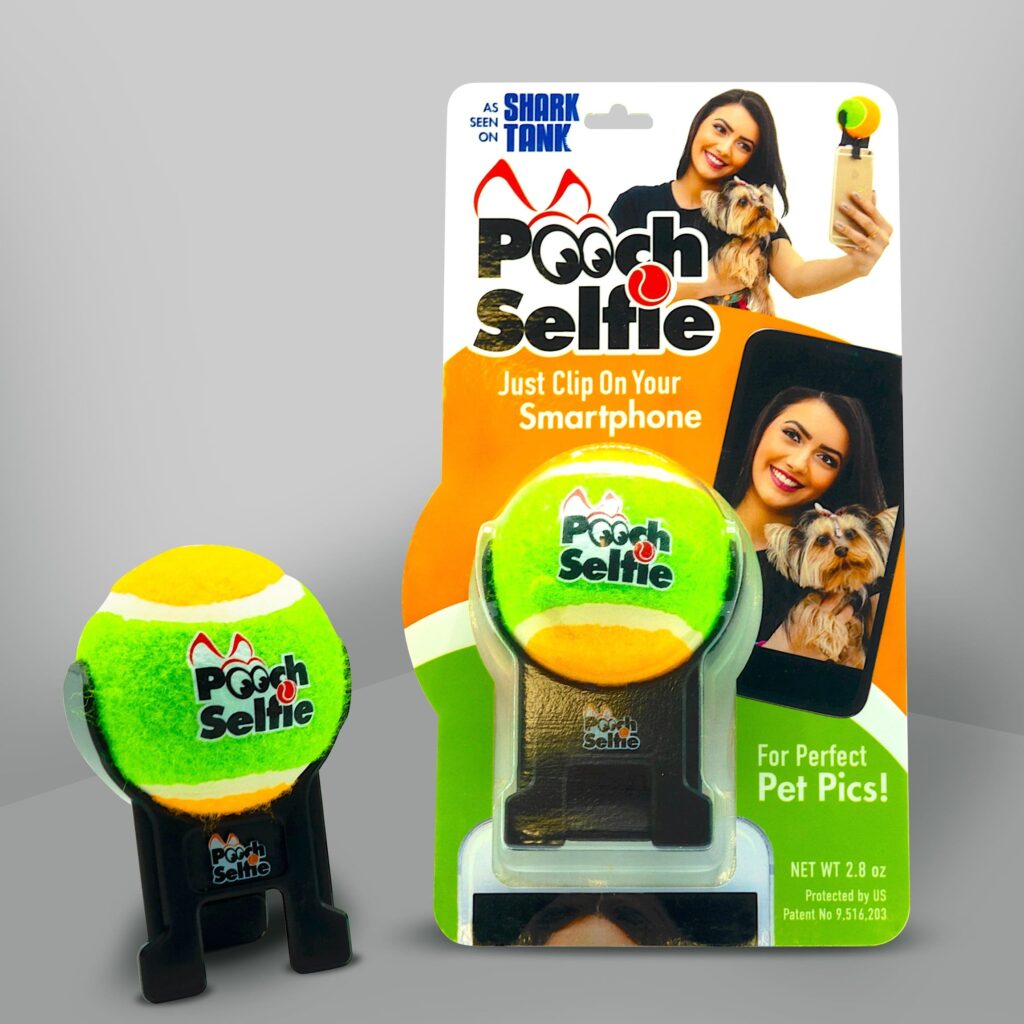
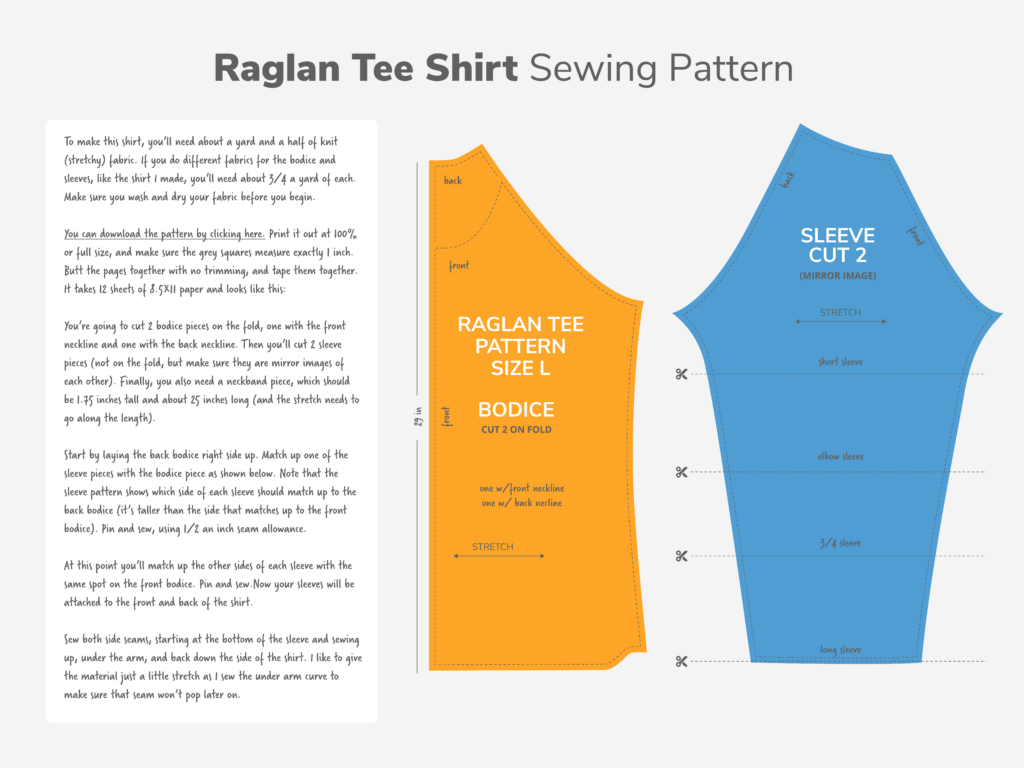 Shed Defender would use something similar, but with specifications for different dog sizes, meaning in addition to the neck, armholes (front leg holes for dogs), chest, and waist, they’d need rear leg holes, tail hole, and measurements so the garment allows the dog to tend to its needs.
This document should include:
[su_note note_color="#dbeafc"]
Shed Defender would use something similar, but with specifications for different dog sizes, meaning in addition to the neck, armholes (front leg holes for dogs), chest, and waist, they’d need rear leg holes, tail hole, and measurements so the garment allows the dog to tend to its needs.
This document should include:
[su_note note_color="#dbeafc"]
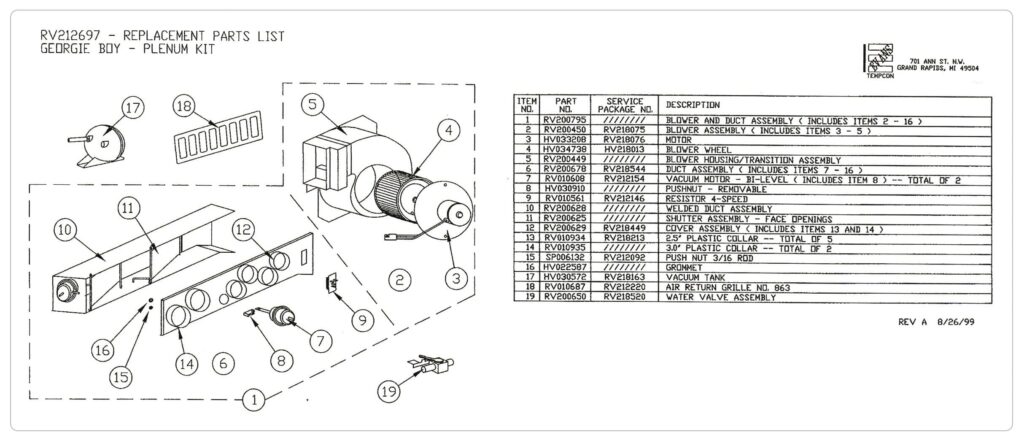 Once you have this, it’s time to find a supplier and manufacturer.
Once you have this, it’s time to find a supplier and manufacturer.
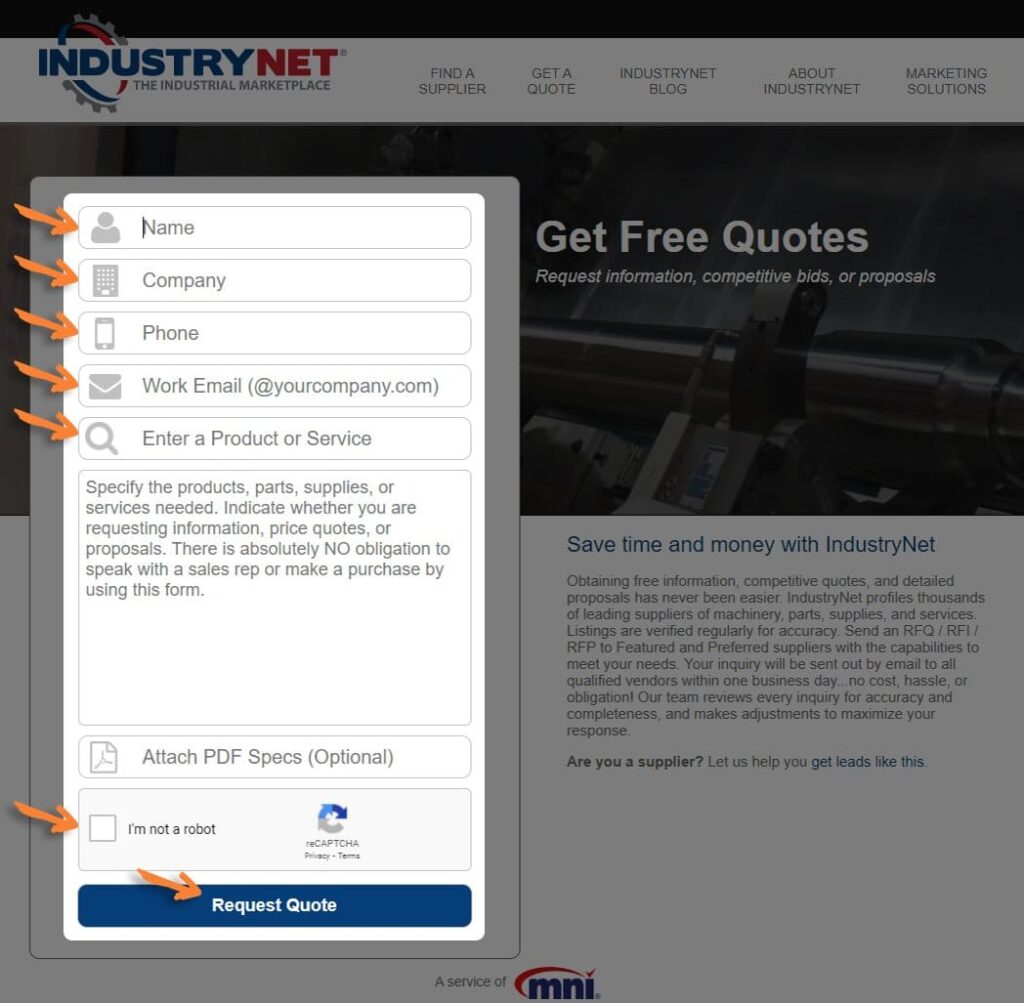
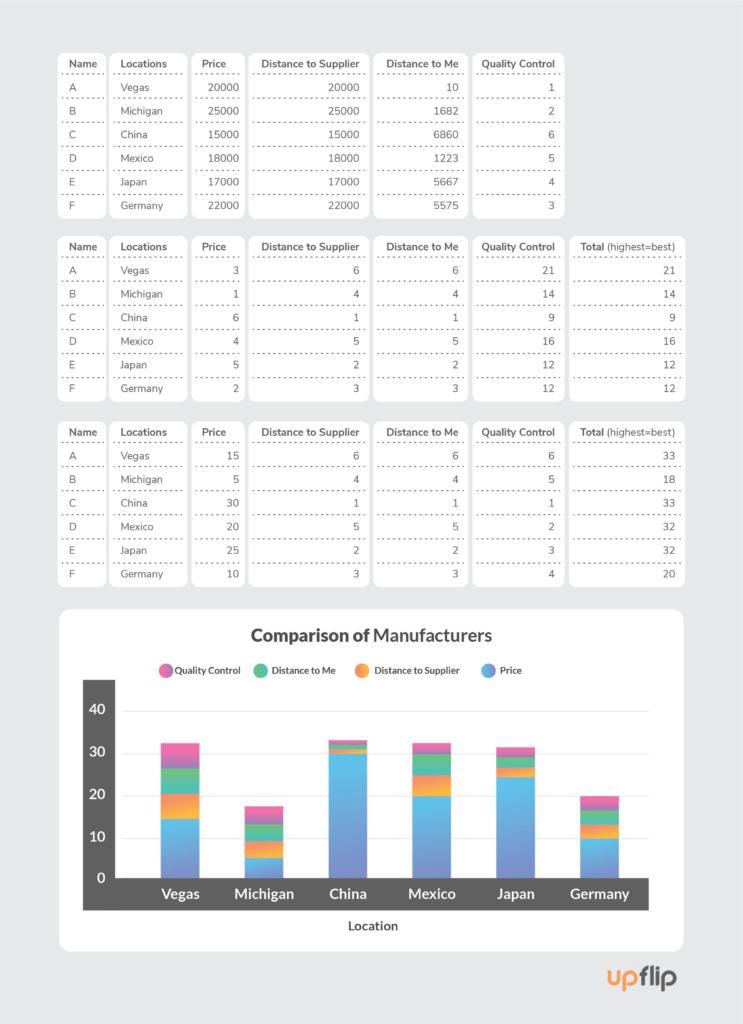 If you want to assign extra weight to each aspect you can but it took including a 5x multiplier on the price columns ranking for me to shift the favor to China in this example. You can see below that the change made China tied with Las Vegasfor the most favorable option.
If you want to assign extra weight to each aspect you can but it took including a 5x multiplier on the price columns ranking for me to shift the favor to China in this example. You can see below that the change made China tied with Las Vegasfor the most favorable option.
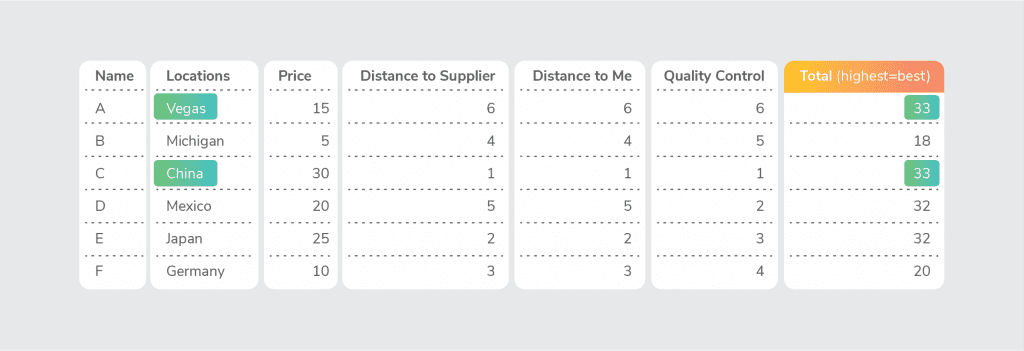 I hope this has helped you understand why I would tend to gravitate towards manufacturing near me during the early stages of product manufacturing.
I hope this has helped you understand why I would tend to gravitate towards manufacturing near me during the early stages of product manufacturing.
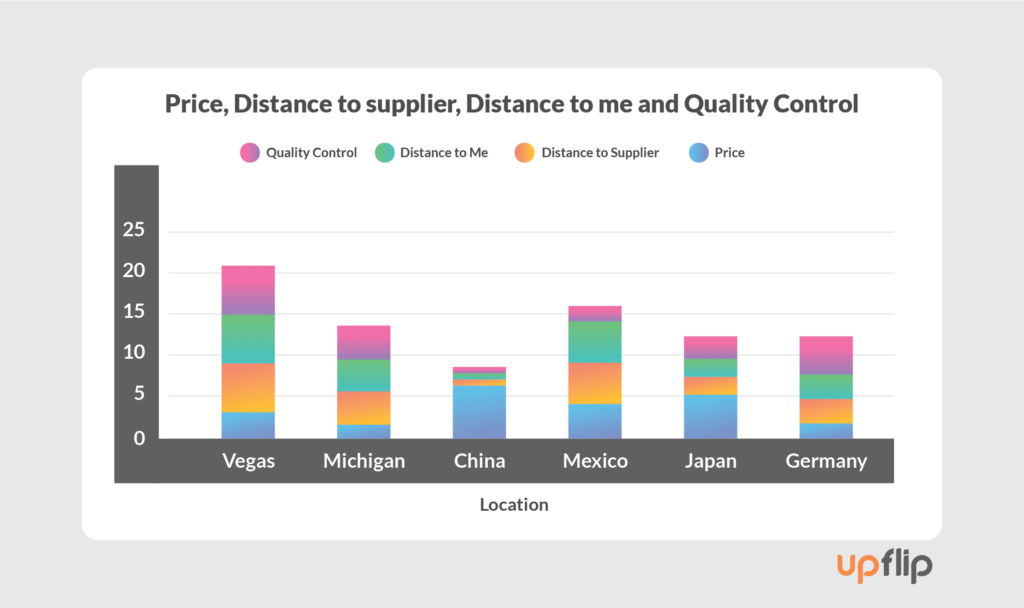
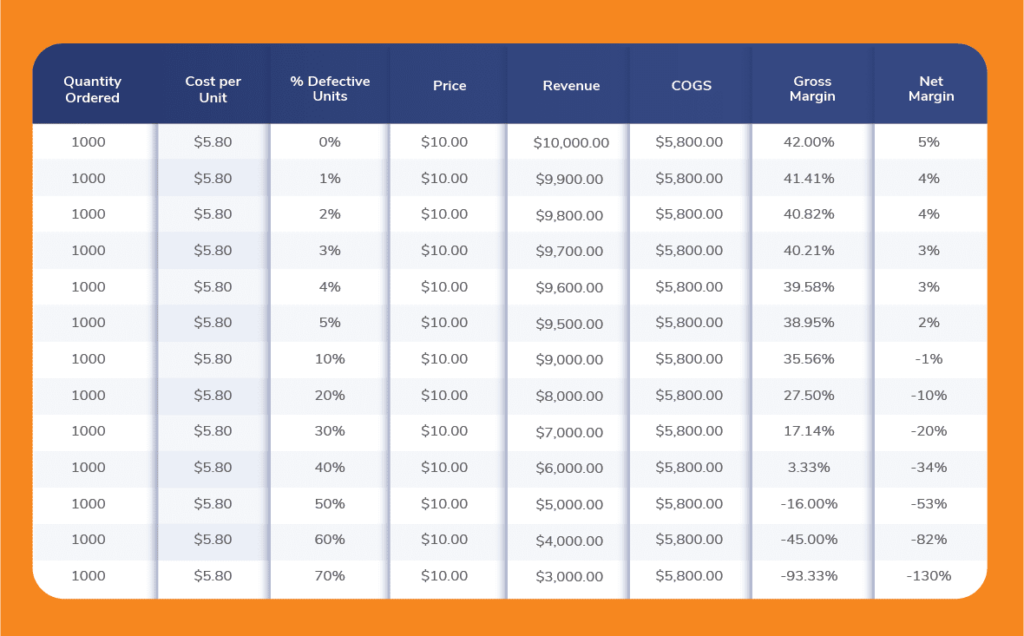
 To effectively run a business, KPIs are necessary to measure progress. KPIs are metrics that measure how well your company is achieving goals laid out in the business plan, following your core values, and achieving your mission.
It’s commonly known that employees focus on what is measured and emphasized as important. Ensure that key performance indicators help measure the things that will keep you focused on running it as a business.
Keep reading for more business tips on how to run a business successfully.
To effectively run a business, KPIs are necessary to measure progress. KPIs are metrics that measure how well your company is achieving goals laid out in the business plan, following your core values, and achieving your mission.
It’s commonly known that employees focus on what is measured and emphasized as important. Ensure that key performance indicators help measure the things that will keep you focused on running it as a business.
Keep reading for more business tips on how to run a business successfully.
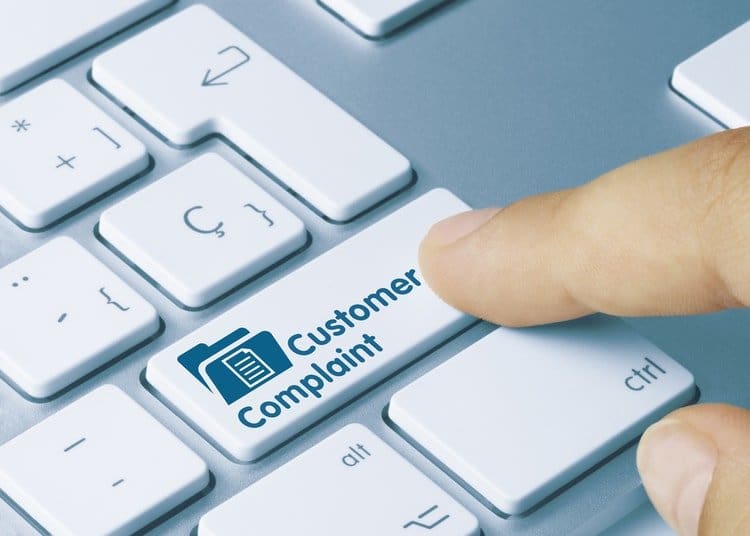 One of the hardest things new businesses deal with is customer complaints. If you handle them well, they can help create a loyal customer, but you might lose a customer if you don’t satisfy their needs.
When a customer has a complaint, try the following process:
One of the hardest things new businesses deal with is customer complaints. If you handle them well, they can help create a loyal customer, but you might lose a customer if you don’t satisfy their needs.
When a customer has a complaint, try the following process:
 To run a business successfully, you have to manage your margins. For some companies, managing margins is easy.
Sanford Booth, a Big Frog franchise owner, told us:
[su_quote]Direct to garment is typically 60-70% (gross) margins or around 45-50% for screen printing, but it fluctuates from month to month based on how many non-profits I’m working with.[/su_quote]
Restaurants will often run such slim margins that they have to actively manage them by the hour to make sure their labor costs don’t rise too much and ruin their profitability. That’s why servers often don’t work eight-hour shifts.
To run a business successfully, you have to manage your margins. For some companies, managing margins is easy.
Sanford Booth, a Big Frog franchise owner, told us:
[su_quote]Direct to garment is typically 60-70% (gross) margins or around 45-50% for screen printing, but it fluctuates from month to month based on how many non-profits I’m working with.[/su_quote]
Restaurants will often run such slim margins that they have to actively manage them by the hour to make sure their labor costs don’t rise too much and ruin their profitability. That’s why servers often don’t work eight-hour shifts.
 Even if it’s small, you need a marketing budget. On average, businesses spend around 8-10% of revenue on marketing, but some spend up to 30%. During the early stages of the company, spend 8-10% of what you want to be making on marketing. It will pay off once you get there.
Be careful when marketing. You don’t want to spend it blindly. Pay attention to your cash flow and if it gets too low, alter your business plan to adjust for the marketing lessons you’ve learned.
Even if it’s small, you need a marketing budget. On average, businesses spend around 8-10% of revenue on marketing, but some spend up to 30%. During the early stages of the company, spend 8-10% of what you want to be making on marketing. It will pay off once you get there.
Be careful when marketing. You don’t want to spend it blindly. Pay attention to your cash flow and if it gets too low, alter your business plan to adjust for the marketing lessons you’ve learned.
 Many business owners allow marketing to go far too long without improving it. You have to monitor the results, mainly social media marketing and paid ads.
If you just let it run without observing what channels are making a profit, you’ll lose too much money. When fine-tuning your marketing, make it a point to check its performance weekly. Once you’ve figured out which channels work, keep optimizing them and drop the rest.
Many business owners allow marketing to go far too long without improving it. You have to monitor the results, mainly social media marketing and paid ads.
If you just let it run without observing what channels are making a profit, you’ll lose too much money. When fine-tuning your marketing, make it a point to check its performance weekly. Once you’ve figured out which channels work, keep optimizing them and drop the rest.
 Inbox
Inbox 
Learn from business failures and successes in 5 min or less. The stories, frameworks, and tactics that will make you a 10x better founder.
 Join our 45,000+ entrepreneurs
Join our 45,000+ entrepreneurs